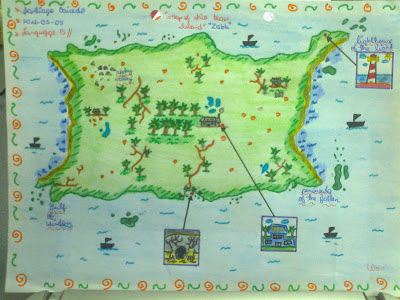Interlanguage: an Ecuadorian example
Perhaps, one of the most important learning events to consider when teaching English is Interlanguage. But, what is Interlanguage?
Back in 1972 Selinker came up with this concept when he noted that utterances by L2 learners differed from those native speakers would have produced in similar situations. From then on plenty of books have been written on the topic and yet Interlanguage remains in many ways an undiscovered country.
Interlanguage is essentially something that reflects students' cultural heritage, their social background and even their personalities; in sum their identity as individuals. That is why Interlanguage happens differently to every person since we are all different. This distinction is another manifestation of how English learners assimilate English. To understand this we need to envision this phenomenon as a bridge
that learners build unconsciously between their mother language and the target language. This "hybrid" construction takes elements of both languages. From Spanish that would be the expressions and words that Spanish speakers have created or acquired throughout the years (we say "Good days" and not "Good morning" for example) to deal with everyday situations. From English would be that percentage that the learner has truly assimilated from the target language and which he is striving to use but cannot do so properly, perhaps for lack of practice. The creation of an interlanguage marks the beginning of a new learning stage and as teachers we must be prepared by being aware of the manifestations of Interlanguage. Here is an example, a little something that happened to a friend of mine not so long ago:
T: Yes, M. How can I help you?
M: Mister, I need consejo...
T: Advice, M. It's advice.
M: Eso advice. Can you give me advice?
T: (sigh) Ok, tell me.
M: Teacher, I like a girl...
T: What's the problem?
M: Well, SHE DOESN'T STAND ME BALL.
In Ecuador we have an expression: when someone shows a romantic interest in someone else and that person corresponds we call that action PARAR BOLA. Obviously if there is a similar expression in English that one is not PARAR BOLA. This person was using what he had learnt in English and used it in his own way, clearly affected by Spanish, because his knowledge of English is still in development and using Interlanguage was how he compensated that defficiency.
Interlanguage offers great possibilities for research. What are the particularities of Interlanguage when developed by Chinese citizens? Or Arabians? If those studies are being developed then they are scattered and perhaps not correctly focused. If we coiuld put all of those studies together a theory on Interlanguage could be developed. That certainly would be something.
Back in 1972 Selinker came up with this concept when he noted that utterances by L2 learners differed from those native speakers would have produced in similar situations. From then on plenty of books have been written on the topic and yet Interlanguage remains in many ways an undiscovered country.
Interlanguage is essentially something that reflects students' cultural heritage, their social background and even their personalities; in sum their identity as individuals. That is why Interlanguage happens differently to every person since we are all different. This distinction is another manifestation of how English learners assimilate English. To understand this we need to envision this phenomenon as a bridge
that learners build unconsciously between their mother language and the target language. This "hybrid" construction takes elements of both languages. From Spanish that would be the expressions and words that Spanish speakers have created or acquired throughout the years (we say "Good days" and not "Good morning" for example) to deal with everyday situations. From English would be that percentage that the learner has truly assimilated from the target language and which he is striving to use but cannot do so properly, perhaps for lack of practice. The creation of an interlanguage marks the beginning of a new learning stage and as teachers we must be prepared by being aware of the manifestations of Interlanguage. Here is an example, a little something that happened to a friend of mine not so long ago:
T: Yes, M. How can I help you?
M: Mister, I need consejo...
T: Advice, M. It's advice.
M: Eso advice. Can you give me advice?
T: (sigh) Ok, tell me.
M: Teacher, I like a girl...
T: What's the problem?
M: Well, SHE DOESN'T STAND ME BALL.
In Ecuador we have an expression: when someone shows a romantic interest in someone else and that person corresponds we call that action PARAR BOLA. Obviously if there is a similar expression in English that one is not PARAR BOLA. This person was using what he had learnt in English and used it in his own way, clearly affected by Spanish, because his knowledge of English is still in development and using Interlanguage was how he compensated that defficiency.
Interlanguage offers great possibilities for research. What are the particularities of Interlanguage when developed by Chinese citizens? Or Arabians? If those studies are being developed then they are scattered and perhaps not correctly focused. If we coiuld put all of those studies together a theory on Interlanguage could be developed. That certainly would be something.




Comments